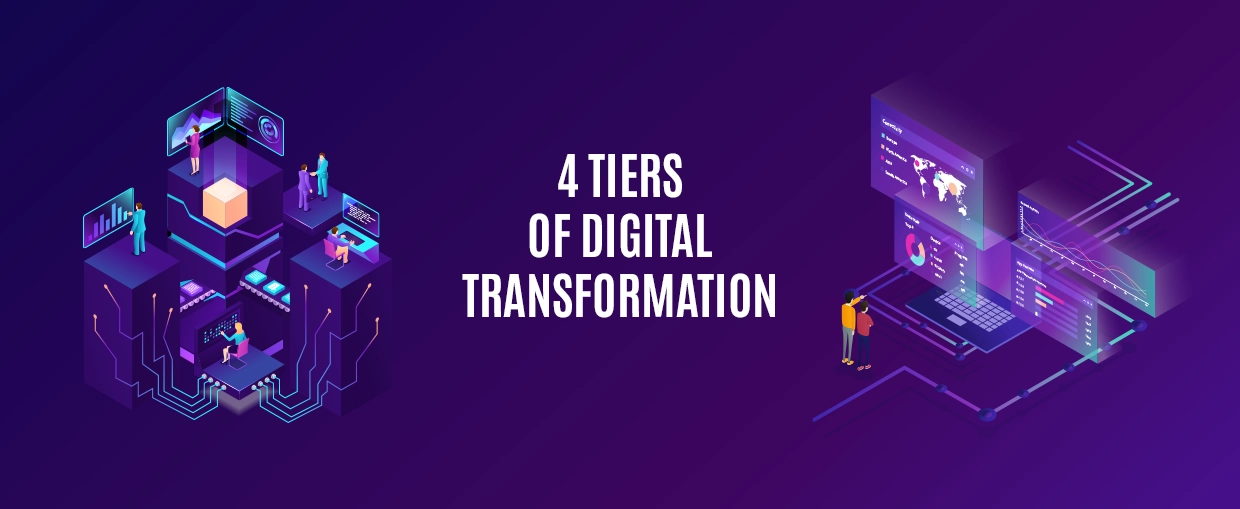While technology runs almost faster than light, so is Extreme Programming, short for XP. You’re up to speed on agile methodologies, but XP is kind of new, right? While it is not a complete mystery out there, it is a major thing these days.
Don’t let the term put you off yet, you might lose out on a lot of sweet stuff. XP was developed in response to problem domains with shifting requirements. Your customers might not be sure what the system should do. You may have a system where the functionality is expected to be updated every few months. The only constant setting in every expert software development company is their ever-shifting needs.
This is when XP will triumph over other methodologies for app development services. It can almost aid QA consulting services or software quality assurance services to produce quality software.
Let’s go all over extreme programming in this piece to fetch its catchy benefits for your organizational development and growth.
Extreme Programming (XP): Definition
Extreme programming is a software development process that is part of the agile methodology family tree. It is based on beliefs, principles, and practices, with the purpose of enabling small to mid-sized teams in a software development company to generate high-quality software while adapting to evolving and changing needs.
What distinguishes XP from other agile approaches is its emphasis on the technical elements of software development. Extreme programming is precise in how engineers act because adhering to engineering principles enables teams to generate high-quality code at a sustainable speed.
In a word, extreme programming is an implementation of excellent practices to the extreme. It can be done all the time because it’s good along with early testing using adept QA consulting services before code production.
Workings of Extreme Programming (XP)
XP, unlike other engineering techniques or approaches, is quite opinionated. It is based on beliefs and principles, in addition to practices. The teams in a software development company are given purpose by their values to guide your decisions in a high-level way.
However, values are abstract and too fuzzy for specific guidance in software/desktop app development services.
Practices are, in some ways, the opposite of values. They’re concrete and down to earth, defining the specifics of what to do. Practices help teams hold themselves accountable to the values. Principles are domain-specific guidelines that bridge the gap between practices and values and that favor QA consulting services.
The Values of Extreme Programming (XP)
XP has five fundamental driving values. They are communication, simplicity, feedback, courage, and respect. Let’s look at each one of them in more detail.
1. Communication
Inherently, software development together with QA consulting services is a team sport that relies on communication for relaying information from one team member to the rest of the team. XP emphasizes the need for adequate communication – face-to-face conversation using a whiteboard or other drawing method.
2. Simplicity
“What is the simplest thing that will work?” is the definition of simplicity. The goal is to reduce waste and strictly accomplish what is absolutely necessary, such as keeping the system architecture as basic as possible so that it is easier to maintain, support, and change. Simplicity also entails addressing only the necessities that you are aware of and refraining from any attempt to forecast the future.
3. Feedback
Teams can find areas for development and update their procedures by receiving persistent feedback on their prior efforts. Feedback also favors simple design. Your team creates something, receives input on its design and execution, and then iteratively improves the product. This is crucial in professional mobile app development services.
4. Courage
Courage, according to Kent Beck (original signer of the Agile Manifesto), is “effective action in the face of fear” (Extreme Programming Explained, p. 20). This definition demonstrates a preference for action based on other principles so that the outcomes are not adverse to the team. You must have the confidence to bring up organizational concerns that are limiting your team’s effectiveness. You must have the courage to abandon a failed strategy and attempt something new. Accepting and acting on feedback requires courage, especially when it is tough to accept building better rapport in software quality assurance.
5. Respect
This value of extreme programming says that members of your team must respect one another in order to communicate, offer, and receive feedback that is respectful of your relationship, and collaborate to develop simple ideas and solutions.
The Principles of XP
Principles are more precise than values in providing guidance for a software development company. They are recommendations that provide context on the values, making them more evident and less confusing.
Facing a large change in the program all at once is never advised but to resort to the Baby Steps concept. It informs us that significant changes are risky. Therefore you must go ahead with the little ones instead during software or proficient app development services.
1. Coding: The XP model’s coding paradigm differs somewhat from standard coding. Drawing graphics (modeling) that will be converted into code, scripting a web-based system, and selecting among numerous potential solutions are all part of the coding process in this case.
2. Testing: The XP framework places a high value on software quality assurance or testing and believes it to be the most important aspect of building error-free software.
3. Listening: If developers are to create high-quality software, they must attentively listen to their users. Sometimes programmers lack in-depth expertise of the system being designed. As a result, programmers must thoroughly comprehend the system’s operation and listen to clients.
4. Designing: This concentrates on certain concrete characteristics that are urgently required, rather than wasting time and effort speculating about future requirements.
5. Pair Programming: XP promotes pair programming, in which two developers collaborate at the same workstation. This method promotes knowledge exchange, decreases mistakes, and enhances code quality.
6. Continuous Integration: Developers incorporate their code into a shared repository numerous times each day. This aids in the detection and resolution of integration challenges of a software development company early in the process.
7. Refactoring: XP promotes refactoring, which is the process of rearranging existing code to make it more efficient and manageable. Refactoring aids in keeping the codebase clean, structured, and understandable.
8. Collective Code Ownership: Individual code ownership does not exist in XP. Instead, the codebase is the responsibility of the entire team. This method guarantees that all team members feel ownership and accountability for the code.
9. Planning Game: XP employs a planning game in which the client and development team work together to prioritize and plan development activities. This method ensures that the team focuses on the most critical features and provides value to the consumer along with software quality assurance.
10. On-Site Customer: XP needs a client on-site who collaborates closely with the development team throughout the project. This method ensures that the customer’s wants are recognized and satisfied while also facilitating contact and feedback.
The Best Practices Followed in XP
Extreme programming and comparable agile methodologies are appropriate for scenarios with a high volume and space of demand change, as well as significant requirement hazards.
The following best practices are adhered to in XP:
1. Continuous Integration: QA consulting services ensure that the code is routinely merged and tested, and all changes are vetted by the development team.
2. Test-Driven Development: Tests are written before code, and code is written to pass those tests.
3. Pair Programming: Developers collaborate in teams to develop code and assess each other’s work. This is applicable in both software and development services as well.
4. Continuous Feedback: Customers and stakeholders provide feedback through frequent demonstrations of functional software.
5. Simplicity: To decrease complexity and increase maintainability, XP stresses simplicity in design and execution even in QA consulting services.
6. Collective Ownership: Everyone on the team is accountable for the code, and anybody can make modifications to any portion of it.
7. Coding Standards: Coding standards are defined and followed to ensure the code’s uniformity and maintainability.
8. Sustainable Pace: The work speed is kept to a manageable level, with regular pauses and chances for relaxation and renewal.
9. Adaptability: Since it stresses flexibility and adaptability, XP is well-suited to projects with frequently changing requirements. It’s particularly ideal for a software development company’s projects with short deadlines because it promotes quick development and deployment.
10. Refactoring: Code is refactored on a regular basis to improve its design and maintainability while remaining functional.
11. Small Releases: Small chunks of software are published, allowing for regular feedback and updates depending on that feedback, thereby aiding software quality assurance.
12. Customer Involvement: Customers actively participate in the development process, offering feedback and clarifying requirements.
13. On-Site Customer: A person from the customer’s company is on hand to offer constant feedback and answer queries, especially when opting for app development services.
14. Short Iterations: Work is divided into brief iterations, generally lasting one to two weeks, to allow for quick development and regular feedback.
15. Planning Game: The team and the client collaborate to plan and prioritize the work for each iteration so that the most valuable features are delivered first.
16. Metaphor: The system’s design and execution are guided by a common metaphor. It goes the same with accompanying QA consulting services.
17. Coding Standards: Coding standards are defined and followed to ensure the code’s uniformity and maintainability.
How To Get Started With XP?
Extreme programming’s technical skills and habits might be difficult to master. Some of the procedures may feel strange to programmers who aren’t used to them.
Teams can begin using XP by implementing one core practice at a time. To determine where to begin, consider what your next aim is. Choose the practice that corresponds to that objective.
Partnering with an accomplished custom software development company can highly favor your cause. They will ensure everything is in excellent order and help you attain a leading market edge.









